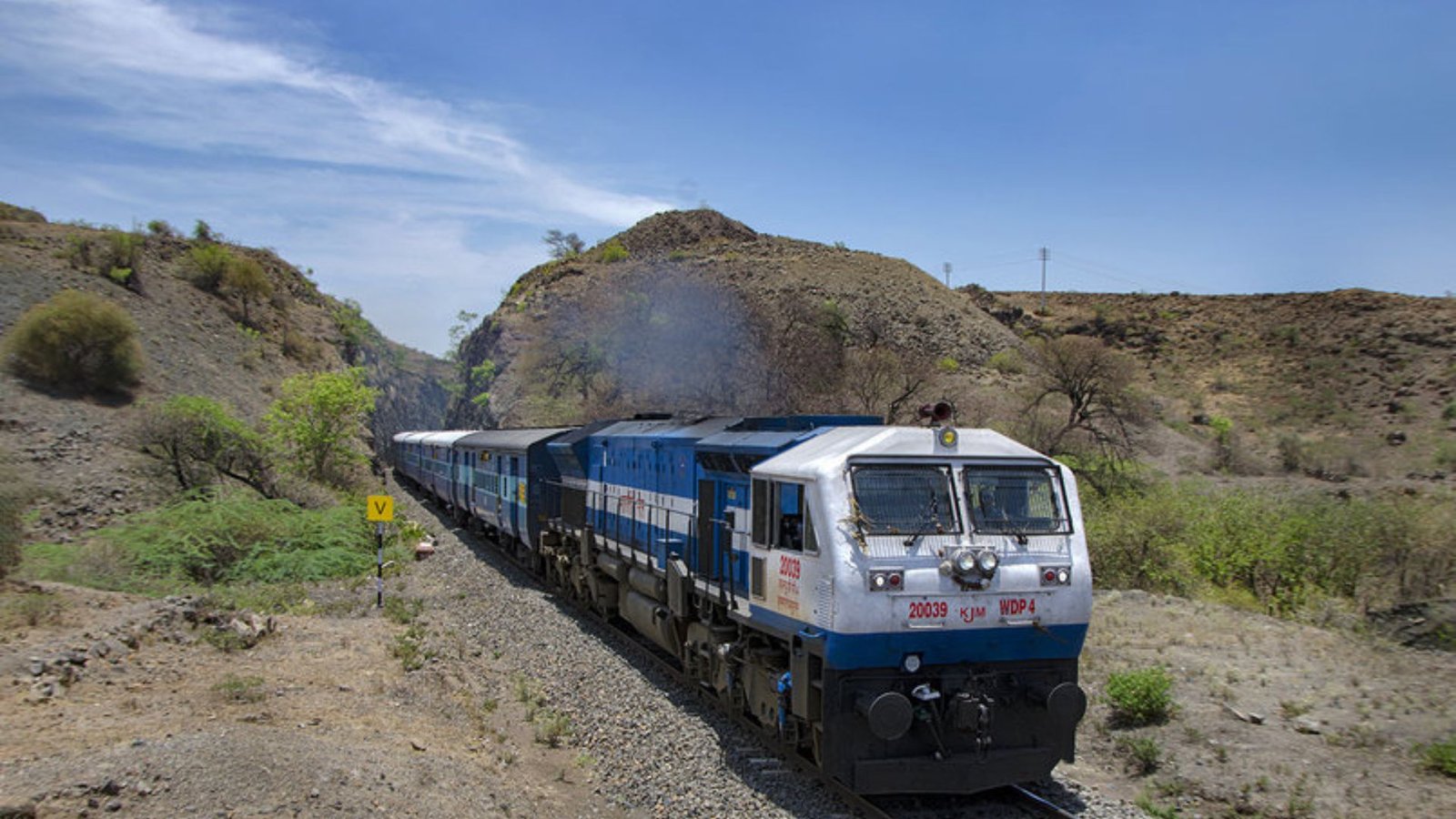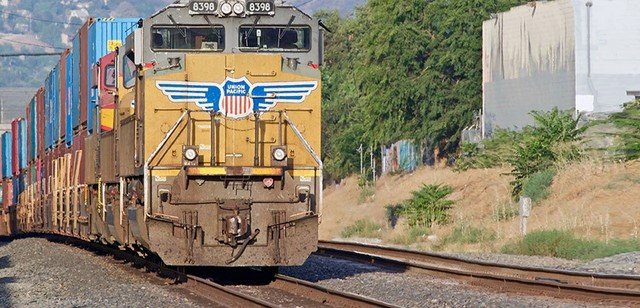In today’s world, the need for sustainable transportation solutions has never been more urgent. As the planet faces the effects of climate change, industries are looking for ways to reduce their environmental impact. Railroads are playing a crucial role in promoting environmental sustainability. They offer a cleaner, more energy-efficient alternative to road and air transport. This article explores how rail systems are contributing to a greener future by cutting emissions, conserving energy, and promoting sustainable practices.

1. Lower Carbon Emissions from Rail Transport
One of the most significant environmental benefits of railroads is their ability to reduce carbon emissions. Trains are inherently more energy-efficient than trucks and airplanes, particularly when transporting large volumes of goods over long distances.
In many regions, electric trains are increasingly replacing diesel-powered ones. These electric systems, especially when powered by renewable energy sources like wind or solar power, drastically cut greenhouse gas emissions. For example, when a train runs on electricity sourced from green energy, it can move large quantities of freight or passengers with a minimal carbon footprint. By shifting more freight and passenger traffic to electric-powered rail, we can significantly reduce emissions from the transport sector.
2. Rail Transport: An Energy-Efficient Alternative
Rail transport is more energy-efficient than road and air transport. Trains can move more goods and passengers with less energy compared to trucks or planes. According to studies, trains consume less fuel per ton of freight and per passenger-mile, making them a more efficient choice for moving both goods and people.
This higher energy efficiency translates directly into lower fuel consumption, which reduces both operational costs and environmental impact. By replacing road freight with rail, energy consumption per ton-mile is cut, making rail an essential part of the transition to a more sustainable transport system.
3. Railroads Help Reduce Road Congestion and Pollution
Another way railroads contribute to sustainability is by reducing road congestion and associated pollution. A single train can carry the equivalent of hundreds of trucks, helping to ease traffic on highways. With fewer trucks on the road, there are fewer emissions from combustion engines, which directly impacts air quality in urban and suburban areas.
By reducing truck traffic, rail systems also help reduce noise pollution and road wear. This, in turn, saves cities money on road repairs and minimizes the environmental footprint of maintaining large highway systems.
4. Railways: A Sustainable Freight Transport Solution
When it comes to freight transport, railroads are a sustainable choice. Shipping goods by rail reduces the need for diesel trucks, which are major contributors to air pollution. Rail transport is especially well-suited for bulk goods like coal, grain, and containers, which can be moved over long distances with much lower fuel consumption than trucking.
As the demand for eco-friendly freight transport grows, rail systems are increasingly used to move goods in a more sustainable manner. Rail offers a viable solution for reducing carbon emissions in the freight sector while ensuring that businesses can transport goods efficiently and affordably.
5. The Role of Green Technologies in Rail Systems
The future of railroads and environmental sustainability is increasingly tied to the development of green technologies. One such technology is the hydrogen-powered train. These trains use hydrogen fuel cells to produce electricity, emitting only water vapor as a byproduct, making them a truly zero-emission form of transport.
Countries like Germany have already started testing hydrogen-powered trains, and this technology is expected to become more widespread in the coming years. As rail systems move toward hydrogen and electric-powered trains, they will help further reduce the transportation sector’s reliance on fossil fuels and cut down on air pollution.
6. Supporting Multimodal Transportation and Sustainability
Multimodal transportation refers to using multiple forms of transport—such as rail, trucks, and ships—to move goods. Railroads are key to creating more sustainable logistics networks. By integrating rail with other eco-friendly transport methods, such as electric trucks or ships powered by wind and solar energy, the entire supply chain becomes more energy-efficient and low-carbon.
As intermodal hubs grow, railroads will become even more important in the movement of goods. The combination of rail, truck, and sea transport helps reduce congestion and emissions, while improving efficiency in global trade.
7. Promoting Public Transport for Sustainable Urban Living
In addition to freight transport, rail systems are an important part of public transport, particularly in urban areas. High-quality rail networks can significantly reduce the need for private cars, which are major contributors to both carbon emissions and air pollution.
When people choose to travel by train instead of driving, there are fewer cars on the road, leading to reduced emissions, lower fuel consumption, and improved air quality. Trains also help reduce traffic congestion, making cities more livable and sustainable.
Urban areas with well-developed rail networks tend to have more efficient, sustainable transportation systems that support green urban development. This helps to create cities that are less reliant on cars and more focused on environmentally-friendly travel options.
8. Railroads and Sustainable Urban Planning
Rail transport also plays an important role in sustainable urban planning. In cities that have strong rail networks, urban sprawl is often limited, as people can live further from city centers and still easily access work, education, and essential services via rail.
Additionally, developments around rail stations tend to prioritize eco-friendly architecture and public spaces, creating communities that are designed with sustainability in mind. These areas often include green spaces, energy-efficient buildings, and a focus on pedestrian-friendly infrastructure, all of which contribute to a lower carbon footprint.
9. Passenger Rail Travel: A Greener Choice
Passenger rail travel is often more sustainable than driving or flying. Trains use less energy per passenger compared to cars or planes, especially on short- and medium-distance trips. As a result, rail is a more eco-friendly mode of transport for travelers.
In regions with well-developed high-speed rail networks, people can travel long distances efficiently and with a smaller environmental footprint than air travel.
Conclusion
Railroads are making a significant impact on environmental sustainability. From reducing carbon emissions and conserving energy to supporting multimodal transport systems and promoting green urban planning, rail systems offer a cleaner, more energy-efficient alternative to road and air transport. With innovations in green technologies like electric and hydrogen-powered trains, railroads will continue to play a key role in shaping the future of sustainable transportation.
As the world moves toward more sustainable solutions to combat climate change, railroads will remain a critical piece of the puzzle, helping to reduce emissions, conserve resources, and promote greener, healthier communities. By investing in and expanding eco-friendly rail systems, we can create a transportation network that supports both people and the planet.




